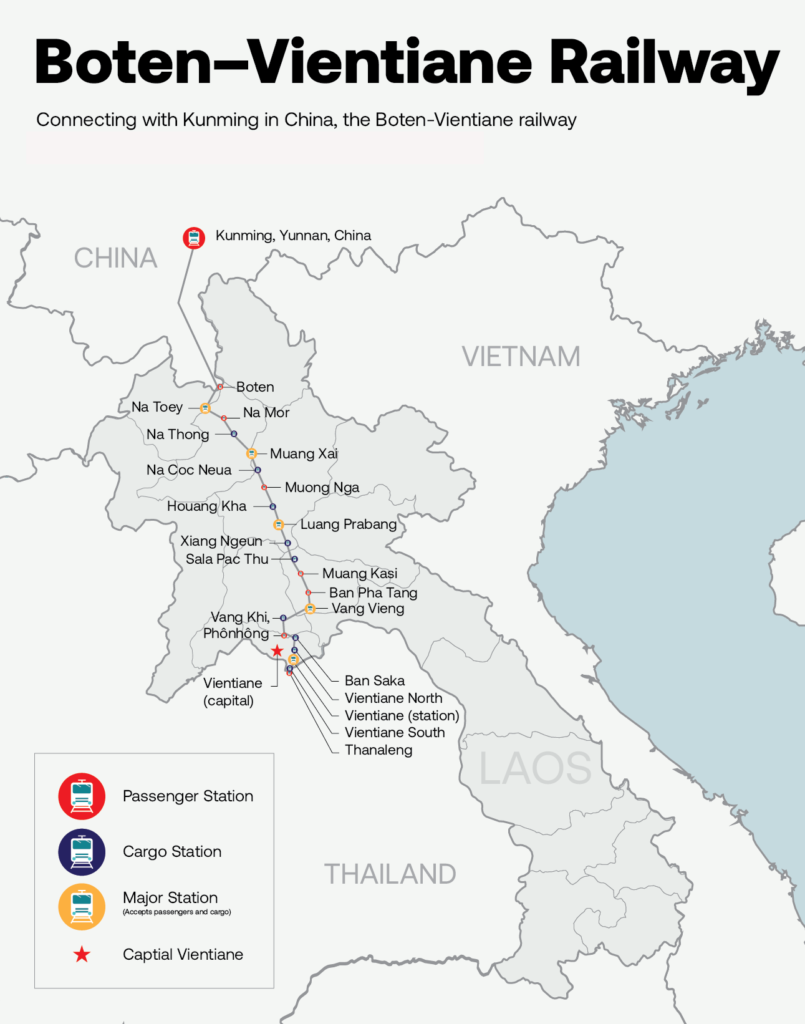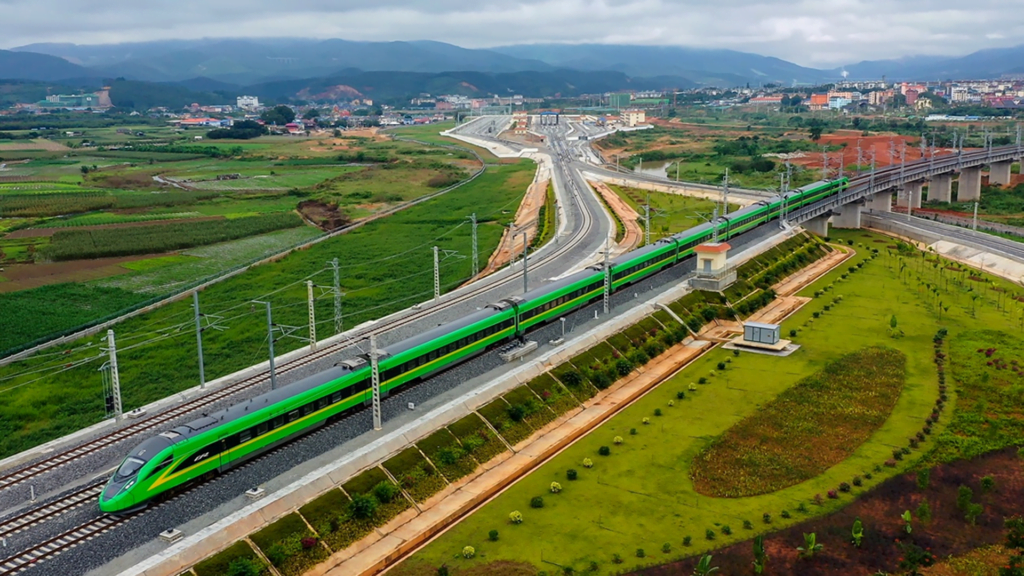The Laos-China Railway: Transforming Southeast Asia

Introduction
Nestled amidst the scenic beauty of Laos, a transformative project “The Laos-China Railway” has taken root: the $6 billion high-speed Railway stretching from Boten to Vientiane. In just a few short years, this Chinese-built marvel has turned dusty lanes surrounded by tropical forests into a potential trade and transport powerhouse. Let’s delve into the intricacies of this monumental endeavor and what it means for both China and Laos.

A Catalyst for Economic Growth
The Laos-China Railway is not merely a track; it’s a lifeline connecting China to the heart of Laos. More than a transportation artery, it’s a catalyst for economic prosperity. By seamlessly linking Laos not just to China, but to Thailand and the broader Southeast Asia, it opens doors to unprecedented opportunities.
Read more: India-Middle East-Europe Economic Corridor
Read more: China’s Belt and Road Initiative: India’s Strategic Response
The Economic Impact
Near its inaugural stop lies a sprawling six-square-mile special economic zone, a testament to the transformative potential of this railway. Within a year, residential towers and office complexes have sprung up, fueled by China’s substantial economic investment.
The World Bank projects that this railway could boost Laos’ aggregate income by up to 21% over the long term, provided it’s managed judiciously. Over 2000 products now have the green light for export, ranging from watermelons to mechanical equipment, enriching both nations.
Bridging Debt and Prosperity
Yet, with progress comes questions. Laos had to shoulder significant debt to realize this venture. More than half of the funding came from loans provided by China’s state-owned lender, the Export Import Bank of China. While this endeavor holds immense promise, it’s crucial for Laos to balance progress with fiscal prudence.
Environmental and Societal Considerations
Critics voice concerns about environmental impact and displacement. Though China allocated substantial funds for environmental protection, there’s apprehension about potential emissions. Additionally, questions linger about the social and economic consequences for Laos, drawing parallels with past lending scenarios.
Diplomacy and Regional Dynamics
The Laos-China Railway is emblematic of the special relationship shared by the two nations. Their shared history, lack of territorial disputes, and alignment on international forums have strengthened their diplomatic ties. This contrasts with Laos’ complex relationship with Western nations, shaped by the scars of the Vietnam War.
Challenges Ahead
In navigating its debt situation, Laos has demonstrated a preference for direct engagement with China, rather than seeking solutions from international financial institutions. This choice reflects the depth of the Laos-China partnership and underscores the need for alternative approaches from Western nations.
A Vision of Success
For China, this railway is more than a physical connection; it’s a testament to its prowess in large-scale infrastructure projects. As the Belt and Road initiative faces challenges, this railway serves as a beacon of success, demonstrating the potential benefits of such endeavors.
Conclusion
The Laos-China Railway is more than steel tracks and locomotives; it’s a testament to the transformative power of strategic partnerships. As Laos navigates the challenges and opportunities that lie ahead, the world watches, cognizant of the potential this railway holds for the region’s economic landscape.
Frequently Asked Questions (FAQs)
The China-Laos high-speed railway stretches approximately 262 miles (422 kilometers) from Boten in Laos to Vientiane, the capital city. It officially opened to the public nearly two years ago, marking a significant milestone in regional connectivity and development.
The Belt and Road Initiative (BRI) is a trillion-dollar global infrastructure and economic development project led by China. Its aim is to build a network of railways, roads, ports, and other infrastructure projects connecting China to Europe, Africa, and Asia. The China-Laos high-speed railway is a crucial component of the BRI, enhancing regional transportation and trade, and contributing to China’s vision of greater economic integration.
Concerns about environmental impacts accompany large-scale infrastructure projects like the China-Laos high-speed railway. While some funds have been allocated for environmental protection, critics worry about potential increases in carbon emissions. China’s Ministry of Foreign Affairs has stated that around $260 million of construction funds were used for environmental protection. However, it remains a topic of debate, and monitoring and mitigation efforts will be crucial to minimizing the railway’s ecological footprint.







